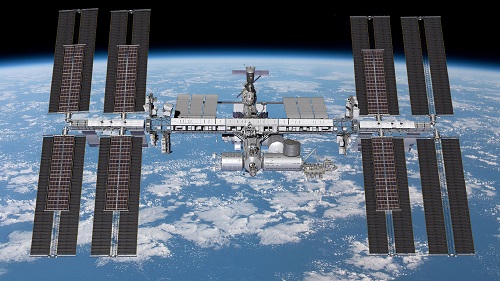Boeing to give space station a solar boost
11 January, 2021
3 min read
By joining our newsletter, you agree to our Privacy Policy


Homeowners are not alone in wanting to add solar panels to boost electricity production — the International Space Station is also getting an upgrade.
Boeing announced it will supply six more solar arrays starting 2021 to boost the power supply at the International Space Station using some of the most powerful solar cells ever launched into space.
The Spectrolab XTJ Prime space solar cells are the same as those used in Boeing’s CST Starliner and have an efficiency of more than 30 percent. Spectrolab, a Boeing company, also produced the station’s original cells.
READ: Innovative new aircraft designed to fly indefinitely.
“The XTJ Prime space solar cells are much more efficient than any of their predecessors and are fit to support the cutting-edge research being done aboard the International Space Station,” said Spectrolab president Tony Mueller.
The new 63ft-by-20ft (19m-by-6m) arrays will together produce more than 120 kilowatts of electricity enough to power more than 40 average US homes and provide a 20 to 30 percent increase in power at the space station.
The aerospace giant says the arrays will provide ISS with electricity to sustain its systems and equipment, plus augment the electricity available to continue a wide variety of public and private experiments and research in the station’s unique microgravity environment.
“When it comes to game-changing research and technological development, the space station is currently hitting its full stride,” said John Mulholland, ISS vice president and program manager for Boeing.
“These arrays, along with other recent upgrades to the station’s power system and data-transfer speed, will ensure that ISS remains an incubator and business model in the commercial space ecosystem for the coming decades.
“Access to this unique lab will continue to pay off as researchers study the challenges of future deep-space exploration and make discoveries that improve life on Earth.”
US-based Deployable Space Systems will produce the structure of the new arrays, including the canister and frame that will unfurl to hold the solar-array blankets in place.
Deployable Space Systems also built the canister, frame and solar array blanket for a prototype of the new arrays that was successfully tested aboard the ISS in June 2017.
The space station is being constantly upgraded and as prime sustainment contractor, Boeings says its studies have determined it could operate safely beyond 2030 if NASA and its international partners choose to do so.
The station's batteries, communications and scientific equipment racks have been upgraded and two international docking adapters made by Boeing have been added to allow spacecraft to dock autonomously.
The US in 2020 regained the capability to ferry its own astronauts to the space station after being forced to rely on Russia since the end of the shuttle program.
However, there are cracks in this optimistic outlook and the station’s future remains uncertain as issues about government funding and the cost of maintaining the aging facility come to a head in the coming years.
Options include deorbiting the space station, handing it over to private ownership or using it as a hub for lunar missions, or building a new orbital station or stations.
Get the latest news and updates straight to your inbox
No spam, no hassle, no fuss, just airline news direct to you.
By joining our newsletter, you agree to our Privacy Policy
Find us on social media
Comments
No comments yet, be the first to write one.

